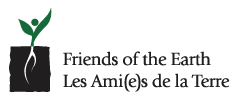Let It Bee
The Problem
More than two-thirds of our food crops depend on bees. But Canada, like the rest of the world, is losing its bees to habitat loss, pesticides, climate change and disease. Honey bees have loyal keepers to speak for them. Wild native bees need a voice too. You can be their voice.
But you can help if you just Let It Bee!
Community gardens, parks and landscaped areas are important places for wild native bees. Canada has more than 800 species of wild, native bees 40 of which are bumble bees. Your own backyard could have 50 different species of wild native bees.
Gardens provide critical habitats for wild, native bees and to help protect them, we must change gardening practices. By taking a “Let It Bee” approach, we can make our gardens into safe places where bees can thrive in any season.
Putting Your Garden In With Saving The Bees In Mind
If you want to save the bees, leave honey bee hives to professional beekeepers and adopt these techniques to make your yard and garden welcoming to wild, native bees.
Pollinators need our help now – challenged by habitat loss, climate change, pesticides and introduced diseases, they are in decline just when we are understanding how very important they are to food security and biodiversity.
A bumble bee feeds on the nectar and pollen in flowers, pollinating them which will produce fruit eaten by songbirds, wildlife and other animals including you and me. We call the bumble bee and other pollinators keystone species because they are species upon which others depend.
The majority of wild, native bees are solitary and do not live in hives like honey bees. The females excavate small tunnel nests into soil, in stems or wood and under rocks. Bumble bees are wild, native bees that are social in that they live in colonies in the ground, for example, in abandoned rodent holes.
Cities and towns can offer refuge for wild, native bees by ensuring the same kind of patchy habitat found in meadows and prairies. In return, the wild, native bees pollinate gardens and urban farms ensuring beautiful landscapes and productive gardens. With the high levels of pesticides in rural landscapes, it is increasingly important to offer urban, pesticide-free refuges for wild, native bees.
Native plants are, by definition, those that occur naturally in a particular region without human intervention. These will be plants growing in your region prior to the arrival of European settlers.
BEE NATIVE
Pollinators and native plants are adapted to each other having evolved together. No chemicals needed. Native plants may be more attractive to native pollinators than alien ornamentals although there are some exceptions such as herbs. Avoid invasive plants. Make sure any ornamentals you choose are pollen producing – some have been bred – e.g. certain sunflowers – to produce little or no pollen.
BEE PATIENT
It takes time for native plants to grow but once established, they will take less maintenance and water than ornamentals. New growth, over the first 1-3 years, may need some watering until fully established, especially in periods of drought. Whether planting seeds, seedling plugs, or pots of native plant species, be patient and you will be rewarded with beautiful, low maintenance gardens good for you and pollinators.
BEE SEASONAL
Plan for next year a sequence of blooming flowers overlapping each of the seasons – spring, summer and fall. The queen bumble bee emerges early from her hibernation and needs early spring blossoms. Plant patches of each flower for better foraging efficiency – try at least three of each plant in drifts or clumps.
BEE WELCOMING
Provide areas that are sunny, with bare soil, good drainage and preferably with slopes facing south. Add some rocks that will get toasty hot in the sun. Most native bees nest underground so avoid using weed cloth or heavy mulch.
BEE RUSTIC
Leave some piles of branches, hollow twigs, reed stems, raspberry canes and brambles for solitary bees. Don’t cut down hollow stemmed plants or at least wait until spring and then leave the bottom eight inches in place. Remember bees nest in woody plant material, rotten logs, stumps, rodent holes and bunch grass. Drill holes into the wood to accommodate nesting solitary bees. Allow a patch of lawn to grow un-mowed in a sunny spot with no major foot traffic – or grow your own patch of wild flower meadow.
BEE PROGRESSIVE
Start small now and you can expand your pollinator garden later. Plan ahead by smothering the grass in late fall. Lay down heavy black plastic, old carpets, plywood or a thick layer of wet newspaper and cardboard or plywood. This gives you a clean slate in the spring for planting new native plants. A light covering of mulch will help them get established and keep weeds away with vigilance – hand pull them. But don’t forget to leave a sunny mulch-free area for solitary bees to nest.
Did you know that there are also a wide variety of bee-friendly flowers and other plants that you can add to your pollinator garden?
Let your neighbors know you are helping save the bees by displaying this free custom Bee & Bee yard sign. Download the 8.5″ x 11″ PDF file and print.


